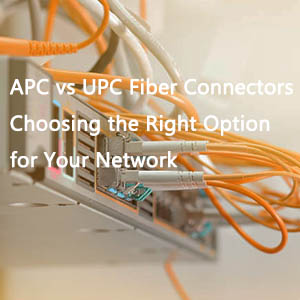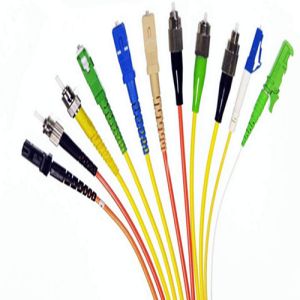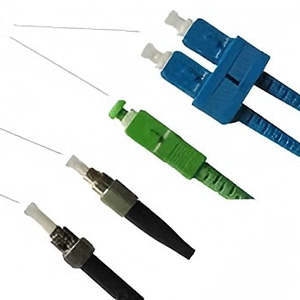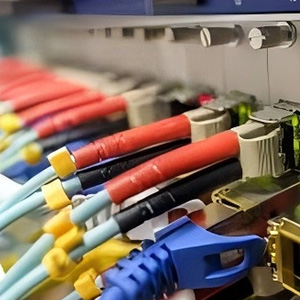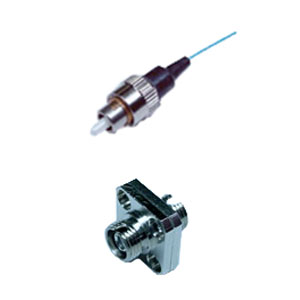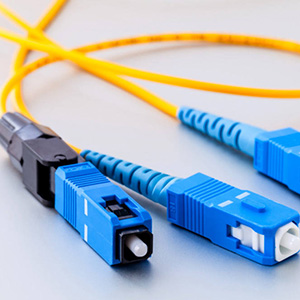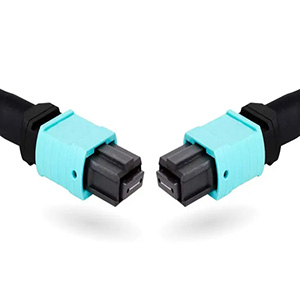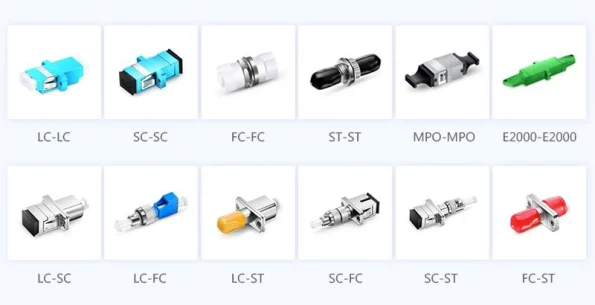
In the realm of modern communication networks, fiber optic adapters are indispensable links that connect fiber optic cables and ensure stable signal transmission across the network. They not only facilitate the efficient connection of trunk fiber networks but also help maintain signal stability during data transmission. However, signal loss is an inevitable phenomenon when using fiber optic adapters. FiberLife is here to guide you through the causes of loss in fiber optic adapters and provide optimization methods to help you choose and use these adapters effectively, thereby enhancing network efficiency.
I. What Is Loss in Fiber Optic Adapters?
In fiber optic networks, “loss” refers to the reduction of signal energy during transmission. When two fiber optic cables are connected using an adapter, signal attenuation can occur due to misalignment or poor connections. Loss in fiber optic adapters typically manifests in two forms: insertion loss and return loss. Insertion loss refers to the reduction of optical power as a signal passes through the adapter, while return loss measures the amount of light reflected back to the source, impacting the overall transmission quality.
II. Key Factors Affecting Loss in Fiber Optic Adapters
Several factors influence loss in fiber optic adapters. Here are the primary ones:
- Connector Interface Quality: The connector interface is a critical component of a fiber optic adapter. Its smoothness, cleanliness, and type can all affect signal transmission. Uneven interfaces or contaminants can cause signal reflection or scattering, leading to increased insertion and return loss.
- Adapter Material and Structure: The material used in fiber optic adapters affects light transmission quality. High-quality adapters often use ceramic, metal, or high-precision plastic materials to minimize interface scattering. Additionally, the structural design of the adapter impacts loss, as a well-engineered adapter can provide optimal alignment and reduce loss.
- Endface Shape of the Fiber: Fiber endfaces come in three main types: flat (PC), ultra-physical contact (UPC), and angled physical contact (APC). Each offers different insertion and return loss values. For example, APC endfaces are angled to reduce signal reflection, making them suitable for high-quality transmission scenarios that require minimal return loss.
- Durability and Insertion Frequency: The durability of fiber optic adapters can impact loss, as frequent insertion and removal can degrade the interface, reducing connection quality and increasing loss. High-quality adapters typically specify an insertion durability rating, with premium adapters rated for thousands of insertions while maintaining low loss.
- Environmental Factors: Temperature and Humidity: Environmental factors like temperature and humidity also affect fiber optic adapters. Extreme temperatures may cause material deformation, while high humidity can contaminate or oxidize the internal light path, increasing signal loss. Selecting weather-resistant adapters is advisable in challenging environments.
III. How to Optimize Loss in Fiber Optic Adapters
Now that we understand the factors affecting loss in fiber optic adapters, we can employ several optimization methods to minimize it and improve fiber optic network efficiency.
- Maintain Adapter Cleanliness: Cleanliness is paramount in influencing fiber optic adapter loss, as even minor dust or dirt particles can attenuate signal strength. We recommend using specialized cleaning tools on adapters and fiber optic cable connectors before installation to prevent contamination. Additionally, using dust caps on unused adapters can protect the interface and extend adapter lifespan.
- Choose the Appropriate Endface Type: Select an endface type based on your application’s needs. For high-return loss applications, an APC adapter can help minimize signal reflection. UPC and PC endfaces are generally good choices for standard communication scenarios, offering cost-effectiveness with minimal loss.
- Select High-Quality Adapter Materials: High-quality ceramic ferrules or stainless steel materials ensure durability and effective loss control. When purchasing adapters, choose those with professional certifications to guarantee material stability, minimizing loss and extending product life.
- Limit Insertion and Removal Frequency: Frequent insertion and removal can increase loss, so avoid unnecessary use. For environments requiring regular testing, consider adapters rated for high durability, as they will maintain low loss even after multiple insertions.
- Optimize the Installation Environment: For environments with high humidity or extreme temperatures, select adapters that offer resistance to high and low temperatures and moisture. Temperature and humidity monitoring in network cabinets can help maintain optimal conditions and reduce environmental impact on adapters.
- Regular Testing and Maintenance: Over time, the performance of fiber optic adapters may degrade. Regular testing of insertion and return loss can help maintain optimal device performance. Using professional fiber testing equipment allows for accurate measurement, making it easier to identify and replace adapters with excessive loss.
IV. Key Factors to Consider When Purchasing Fiber Optic Adapters
When choosing a fiber optic adapter, consider not only potential loss but also these additional factors:
- Adapter Compatibility: Compatibility is crucial for network operation. Ensure the adapter is compatible with the fiber optic cable and equipment, such as SC, LC, or ST connectors, to avoid incompatibility issues that could result in signal attenuation or physical damage.
- Brand and Quality Assurance: Since fiber optic adapters are essential network components, quality is critical. Choose reputable brands to ensure adapter performance and durability. Quality adapters not only help minimize loss but also contribute to overall network stability.
- Adapter Specifications and Connection Type: Choose an adapter specification and connection type according to the application environment. In high-density cabling environments, compact LC adapters optimize space usage. Ensure that adapters used in single-mode or multi-mode networks match the trunk fiber type for optimal performance.
- Insertion Durability: For applications requiring frequent insertion, choose fiber optic adapters rated for high durability to ensure consistent performance. Knowing an adapter’s insertion life helps users select products best suited for their application.
V. Future Trends in Fiber Optic Adapters
As communication technology advances and data transmission demands grow, fiber optic adapters are continuously evolving. Here are a few anticipated advancements:
- High-Density Adapters: With the increasing need for high-density cabling in data centers and enterprise networks, fiber optic adapters will continue to evolve toward smaller sizes and higher density, allowing more connections in limited space.
- Intelligent Fiber Optic Adapters: Future fiber optic adapters may incorporate intelligent monitoring capabilities, allowing real-time loss detection and maintenance alerts to improve network reliability.
- Eco-Friendly Materials: As environmental awareness grows, fiber optic adapter production will likely incorporate more eco-friendly materials to reduce environmental impact.
We hope this article has provided you with a clear understanding of fiber optic adapter loss and effective ways to optimize it. Fiber optic adapters are essential for maintaining high-quality, stable network connections, and selecting the right adapter can significantly enhance performance. For top reliability and efficiency, we recommend the E2000(LSH)/APC to FC/APC Simplex OS2 Single Mode Hybrid Fiber Optic Adapter/Coupler with Flange—an ideal choice for singlemode networks requiring low loss and high precision.
To explore this adapter and our complete selection of fiber optic products, visit FiberLife. Our product experts are here to help you find the best solutions for your network. Discover more about fiber optic technology and optimize your setup with FiberLife’s trusted products!


